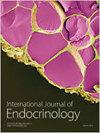Comparison of HCG Trigger versus Dual Trigger in Improving Pregnancy Outcomes in Patients with Different Ovarian Responses: A Retrospective Study
IF 2.3
4区 医学
Q3 ENDOCRINOLOGY & METABOLISM
引用次数: 0
Abstract
Objective. During in vitro fertilization-embryo transfer (IVF-ET) treatment, the reproductive endocrine regulatory mechanisms hold pivotal importance. Specifically, the serum estradiol () level during ovulation emerges as a critical factor influencing pregnancy outcomes. This retrospective study aimed to comprehensively compare two common clinical regimens based on the grouping of serum levels and the number of oocytes retrieved on the trigger day. Our objective was to evaluate the pregnancy outcomes in IVF-ET patients across different ovarian response groups, exploring the efficacy of the dual-trigger and single-trigger regimens to provide valuable insights for optimizing clinical strategies in the context of IVF-ET. Methods. A retrospective analysis was conducted on the clinical data of 2778 infertile patients who underwent ART (IVF/ICSI). Subsequently, a detailed statistical analysis was performed on 1032 patients following an antagonist regimen. Participants were categorized into single-trigger and dual-trigger groups based on real-world trigger protocols, considering different ovarian responses. Comprehensive statistical assessments were conducted on baseline characteristics, ovulation induction, and pregnancy outcomes. Results. Baseline characteristics and cycle parameters among the three patient groups (high ovarian response, normal response, and poor response) exhibited no significant differences between the dual-trigger and single-trigger regimen groups. Despite the dual-trigger regimen utilizing a significantly lower HCG dose, no notable discrepancies were observed in laboratory results and pregnancy outcomes (embryo transfer rate, pregnancy rate, and live birth rate) for normal and high responders. Remarkably, levels were higher in the dual-trigger group compared to the single-trigger group. In high and normal responders, the dual-trigger regimen demonstrated increased oocyte counts and oocyte acquisition rates, coupled with decreased transfer cancellation rates attributed to ovarian hyperstimulation syndrome (OHSS). Intriguingly, patients with a poor ovarian response experienced no graft cancellations due to OHSS prevention in either group. Conclusion. For patients with high and normal ovarian responses, the utilization of a dual-trigger regimen on the trigger day effectively mitigates the risk of OHSS. Our large sample study supports the substitutability of the dual-trigger regimen over the single-trigger regimen without compromising pregnancy outcomes. However, this conclusion is not applicable to patients with poor ovarian responses. The results of this study highlight the necessity of adopting a customized and individualized treatment approach that should be based on the patient’s ovarian response. Additionally, recognizing the pivotal role of the endocrine environment in influencing pregnancy outcomes and the occurrence of OHSS, further exploration of the effects of different triggering regimens on endocrine parameters is warranted. Such investigations will contribute to enhancing the reproductive outcomes of IVF-ET technology.HCG 触发器与双重触发器在改善不同卵巢反应患者妊娠结局方面的比较:一项回顾性研究
目的。在体外受精-胚胎移植(IVF-ET)治疗过程中,生殖内分泌调节机制至关重要。具体而言,排卵期血清雌二醇()水平是影响妊娠结局的关键因素。这项回顾性研究旨在根据血清水平分组和触发日取回的卵母细胞数量,全面比较两种常见的临床方案。我们的目标是评估 IVF-ET 患者不同卵巢反应组的妊娠结局,探讨双触发和单触发方案的疗效,为优化 IVF-ET 临床策略提供有价值的见解。研究方法对2778名接受人工授精(IVF/ICSI)的不孕患者的临床数据进行回顾性分析。随后,对使用拮抗剂方案的 1032 名患者进行了详细的统计分析。根据真实世界的触发方案,考虑到不同的卵巢反应,参与者被分为单触发组和双触发组。对基线特征、促排卵和妊娠结果进行了全面的统计评估。结果三组患者(卵巢反应高、反应正常和反应差)的基线特征和周期参数在双触发方案组和单触发方案组之间无明显差异。尽管双触发方案使用的 HCG 剂量明显较低,但在实验室结果和妊娠结果(胚胎移植率、妊娠率和活产率)方面,正常反应者和高反应者并无明显差异。值得注意的是,与单触发组相比,双触发组的水平更高。在高反应和正常反应者中,双触发方案显示卵母细胞计数和卵母细胞获取率增加,同时因卵巢过度刺激综合征(OHSS)而取消移植的比率降低。耐人寻味的是,卵巢反应不佳的患者在任何一组中都没有因预防卵巢过度刺激综合征而取消移植。结论对于卵巢反应高和卵巢反应正常的患者,在触发日使用双触发方案可有效降低OHSS的风险。我们的大样本研究支持双触发方案可替代单触发方案,且不会影响妊娠结局。然而,这一结论并不适用于卵巢反应不佳的患者。这项研究的结果突出表明,有必要根据患者的卵巢反应采取定制化和个体化的治疗方法。此外,考虑到内分泌环境在影响妊娠结局和OHSS发生方面的关键作用,有必要进一步探讨不同触发方案对内分泌参数的影响。这些研究将有助于提高 IVF-ET 技术的生殖效果。
本文章由计算机程序翻译,如有差异,请以英文原文为准。
求助全文
约1分钟内获得全文
求助全文
来源期刊

International Journal of Endocrinology
ENDOCRINOLOGY & METABOLISM-
CiteScore
5.20
自引率
0.00%
发文量
147
审稿时长
1 months
期刊介绍:
International Journal of Endocrinology is a peer-reviewed, Open Access journal that provides a forum for scientists and clinicians working in basic and translational research. The journal publishes original research articles, review articles, and clinical studies that provide insights into the endocrine system and its associated diseases at a genomic, molecular, biochemical and cellular level.
 求助内容:
求助内容: 应助结果提醒方式:
应助结果提醒方式:


